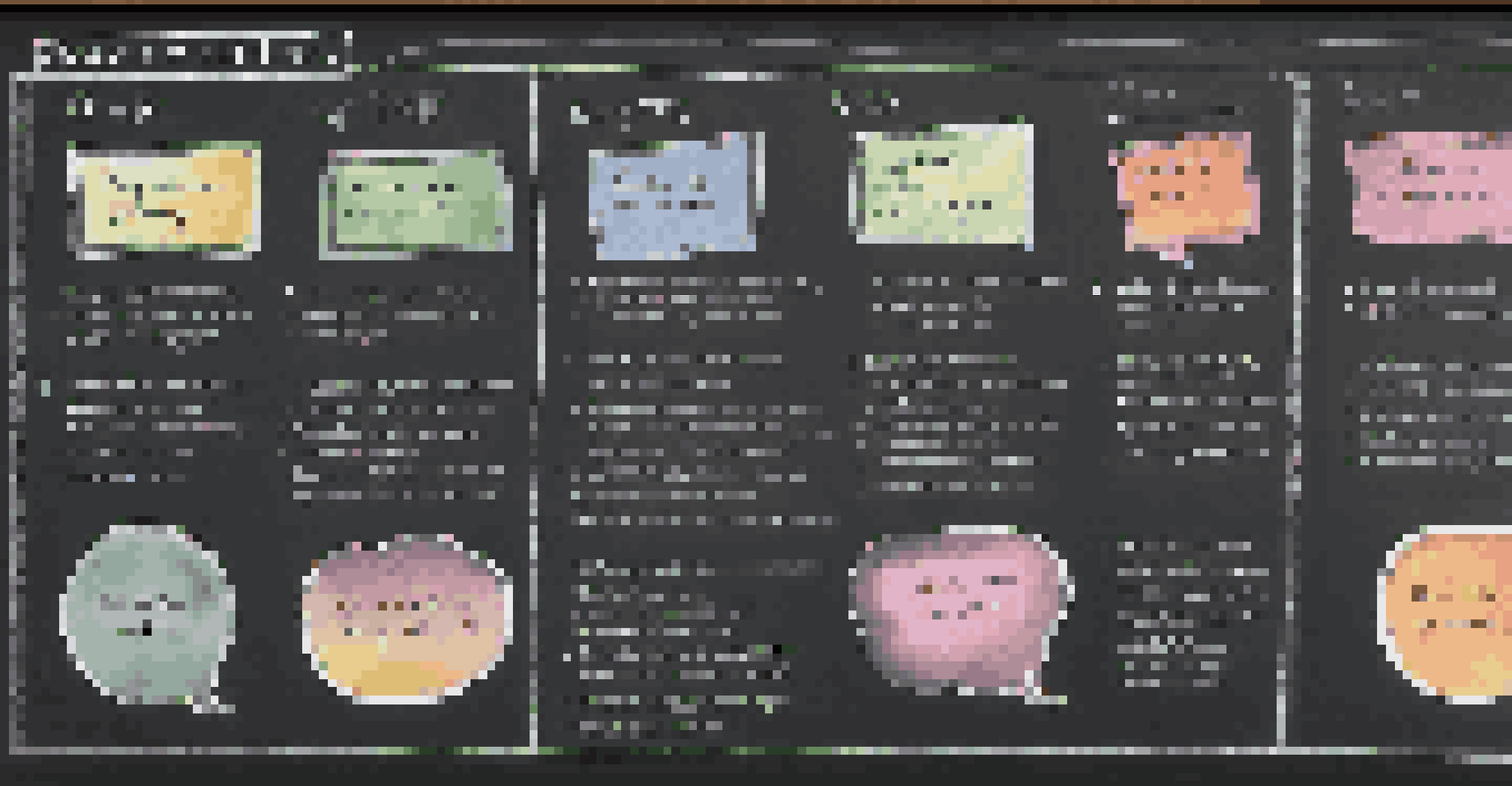Cognitive Behavioral Techniques for Addressing Disruptive Behavior

Understanding Disruptive Behavior in Different Contexts
Disruptive behavior can manifest in various settings, from classrooms to workplaces. Understanding the root causes is crucial, as these behaviors often stem from unmet needs or external pressures. For example, a child might act out due to frustration with schoolwork, while an employee may show disruptive tendencies due to stress. By recognizing the specific context and triggers, we can better address these behaviors using targeted strategies.
The greatest discovery of my generation is that a human being can alter his life by altering his attitude.
It's essential to consider individual differences; what may be disruptive for one person might not be for another. Factors such as age, environment, and personal experiences play a significant role. For instance, a teenager might express disruptive behavior during a sensitive period of development, while an adult may do so in response to workplace dynamics. Tailoring our approach to the individual can lead to more effective outcomes.
Ultimately, understanding disruptive behavior is the first step towards addressing it. By examining the context and individual factors, we can create a foundation for applying cognitive-behavioral techniques that promote positive change and reduce negative behaviors.
Introduction to Cognitive Behavioral Techniques
Cognitive Behavioral Techniques (CBT) are powerful tools for addressing disruptive behavior. They focus on the relationship between thoughts, feelings, and actions, helping individuals understand how their mental processes influence their behavior. For example, someone who frequently interrupts others may not realize that their anxious thoughts are driving this behavior.

CBT techniques often involve identifying and challenging negative thought patterns. This could mean reframing a belief like 'I always mess up' into 'I can learn from my mistakes.' Such shifts in thinking can significantly affect emotional responses and behaviors, leading to more constructive interactions.
Understanding Context is Key
Disruptive behavior often arises from unmet needs or external pressures, making it crucial to identify specific triggers in different settings.
Moreover, CBT emphasizes practical strategies, such as setting specific goals and monitoring progress. By breaking down larger issues into manageable steps, individuals can see real improvement over time, fostering a sense of accomplishment and motivation to continue changing.
Identifying Triggers for Disruptive Behavior
One of the first steps in applying CBT is identifying the triggers that lead to disruptive behavior. This involves observing patterns and noting when and where these behaviors occur. For instance, a student may act out during math class but remain calm during art, signaling a potential difficulty with the subject matter.
It's not what happens to you, but how you react to it that matters.
Keeping a journal can be an effective method for tracking these triggers. By writing down feelings and behaviors in specific situations, individuals can start to see correlations and understand what prompts their disruptive actions. This awareness is a crucial component of cognitive behavioral strategies.
Once triggers are identified, individuals can work on developing coping strategies tailored to those specific situations. For example, if a child gets frustrated with math, they might learn to use deep breathing techniques to manage their emotions before they escalate.
Challenging Negative Thought Patterns
A key component of CBT is challenging negative thought patterns that contribute to disruptive behavior. These patterns often include all-or-nothing thinking, overgeneralization, and catastrophizing. For example, a student might think, 'If I can't solve this problem, I'll never pass math,' which can lead to avoidance and frustration.
By using cognitive restructuring techniques, individuals can learn to question these thoughts. Asking themselves questions like, 'Is this thought really true?' or 'What evidence do I have?' can help them reframe their perspective. Instead of seeing a single mistake as a failure, they can view it as a learning opportunity.
Cognitive Techniques Promote Change
Cognitive Behavioral Techniques (CBT) help individuals challenge negative thought patterns and develop effective coping strategies to manage disruptive behavior.
Challenging these negative thoughts is not just about reducing disruptive behavior; it also promotes resilience and a growth mindset. With practice, individuals can develop a more balanced view of their abilities and challenges, leading to healthier emotional responses.
Developing Coping Strategies for Disruptive Behavior
Effective coping strategies are essential for managing disruptive behavior. These strategies can include relaxation techniques, mindfulness practices, and problem-solving skills. For instance, a student might learn to use a simple breathing exercise to calm down before responding to frustration in class.
Role-playing can also be a beneficial method for developing coping strategies. By practicing how to respond to challenging situations in a safe environment, individuals can build confidence and prepare for real-life scenarios. This approach allows them to experience success and learn from their mistakes without the pressure of immediate consequences.
Additionally, positive reinforcement can help solidify these coping strategies. Rewarding oneself for using a coping mechanism effectively can motivate individuals to continue practicing these techniques and ultimately reduce disruptive behavior over time.
Implementing Behavior Modification Techniques
Behavior modification techniques are practical applications of CBT principles aimed at reducing disruptive behavior. These techniques often include reinforcement strategies, where positive behaviors are rewarded, and negative behaviors are not reinforced. For example, a teacher might implement a point system where students earn points for staying on task, which can be exchanged for rewards.
Another effective method is the use of clear expectations and consequences. By setting clear rules and consistently enforcing them, individuals are more likely to understand the boundaries of acceptable behavior. This clarity helps them make better choices in challenging situations.
Support Systems Enhance Success
Having a strong support system, including friends, family, and professionals, is vital for encouraging positive behavior changes through cognitive strategies.
Moreover, involving individuals in the process of setting these expectations can foster a sense of ownership and accountability. When people feel they have a say in the rules that govern their behavior, they are more likely to adhere to them and take responsibility for their actions.
The Role of Support Systems in Behavior Change
Support systems play a crucial role in successfully implementing cognitive behavioral techniques for addressing disruptive behavior. Whether it's friends, family, teachers, or counselors, having a supportive network can provide encouragement and motivation. For instance, a parent who actively engages in their child's behavior management plan can help reinforce positive changes at home.
Encouragement from peers can also be invaluable. When individuals feel backed by their friends or colleagues, they are more likely to take risks and try new coping strategies. Group settings, such as therapy sessions or support groups, can provide a safe space for sharing experiences and learning from one another.

Additionally, having access to professional support, such as therapists trained in CBT, can enhance the effectiveness of behavioral interventions. These professionals can offer tailored strategies and insights, ensuring that individuals receive the guidance they need to navigate challenges and reduce disruptive behavior effectively.